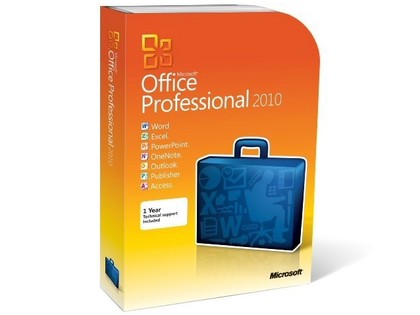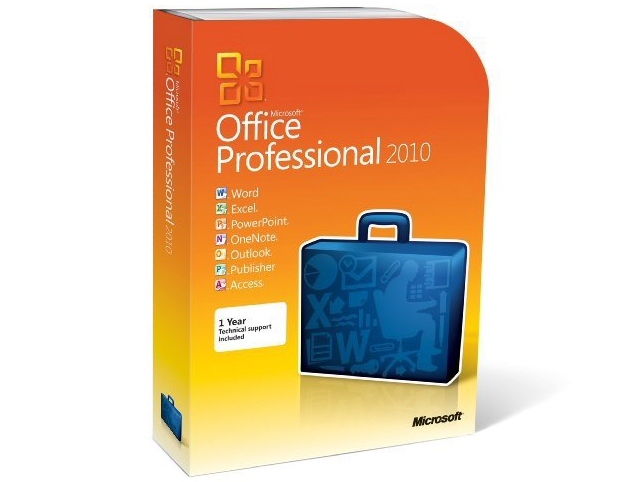Why you can trust TechRadar

Microsoft Office 2010: Verdict
The Office 2010 interface cements the ribbon firmly in place at the top of the screen; it also fixes the biggest problems with the ribbon interface by letting you customise the ribbon fully, moving, adding and deleting icons or creating your own custom ribbon with exactly the tools you use.
You can even attach a custom ribbon to a template so you only get it when you need it.
What Microsoft calls the Backstage menu - and the rest of us will call the File menu - has also grown up and become useful.
It isn't as pretty as the glowing orb of the old Office button and it doesn't take advantage of design principles like Fitts Law (which makes the corners of the screen the easiest to click on), but not many people run one Office app full screen at a time any more and the File tab is far more obvious.
More importantly, the features on the Backstage menu are the ones you need to have there and they get much the same logical organisation as the ribbon gives to the features you use in your document.
Office 2010 has plenty of new features that just make it easier to get things done; from instantly inserting screenshots to PowerPoint's video editing to sparklines in Excel to conversation view and the Outlook Social Connector.
The paste preview finally lets you paste content into documents and get it looking right first time. The graphics tools across the Office apps don't compete with high-end image editing packages - although Background Removal is extremely impressive - but they make it easy to give images you're using in documents extra polish.
New security tools aren't overly obtrusive for the protection they give you against malware in documents online.
And with the Office web apps, you're going to be working with online documents much more. Even if you don't use the cut-down online apps themselves, you can put documents on SkyDrive so you can work on them at the same time as someone else in the full Office apps.
Office 2010 is also the first version of Office with 64-bit versions of the apps; that means you can work with Excel spreadsheets that are larger than 2GB, speed through long documents in Word, handle massive email stores in Outlook or just avoid the overhead of running 32-bit apps on a 64-bit system (Office on Windows 64-bit does a good job, but it doesn't deliver the speed ups we're seeing when you go completely 64-bit).
64-bit Office is great, except for the things it doesn't work with; Microsoft tells us the problems with synchronising to Office Mobile will be fixed by the time the Office Mobile apps arrive in June, but there are still issues with 64-bit Flash in PowerPoint (which is at least in beta) and so far the Outlook Social Connectors are still 32-bit, as are most third-party Office add-ins.
None of those are the responsibility of the Office team, but it does show that Microsoft - and Adobe - still have work to do for 64-bit, especially given how many new PCs now come with 64-bit Windows installed.
We liked:
The improved performance, especially in Outlook Search; Outlook's conversation view and embedded calendar views; the customisable ribbon interface, the clear organisation of Backstage; sharing and collaboration in OneNote directly and in other apps through SkyDrive; the amazing background removal tool and PowerPoint video editing; and improved but unobtrusive security.
We disliked:
Only the flagship applications get the flagship features even when they're just as relevant elsewhere; OneNote lags on AutoCorrect and spelling tools, Publisher lags on image editing. 64-bit Office has big advantages but the 64-bit ecosystem is still not ready.
Verdict:
There might not be any one feature that you'd buy Office 2010 for (although search in Outlook comes pretty close and collaborating in Word, Excel, PowerPoint and especially OneNote through SkyDrive is compelling), but put them all together and you get a hugely powerful suite of apps that's still easy to work with.
Current page: Microsoft Office 2010: Verdict
Prev Page Microsoft Office 2010: Access, Publisher reviewMary (Twitter, Google+, website) started her career at Future Publishing, saw the AOL meltdown first hand the first time around when she ran the AOL UK computing channel, and she's been a freelance tech writer for over a decade. She's used every version of Windows and Office released, and every smartphone too, but she's still looking for the perfect tablet. Yes, she really does have USB earrings.
